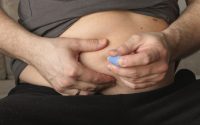Deaf girl hears for first time thanks to “mind-blowing” gene therapy
A deaf child has received a new gene therapy treatment with “mind-blowing” results that have allowed her to hear for the first time.
Opal Sandy, from Oxfordshire, UK, is the first British patient and youngest child in the world to receive this groundbreaking treatment, according to a press release from Cambridge University Hospitals.
“When Opal could first hear us clapping unaided it was mind-blowing,” Jo Sandy, Opal’s mother, said in a statement. “We were so happy when the clinical team confirmed at 24 weeks that her hearing was also picking up softer sounds and speech.”
Opal was born deaf due to a rare genetic disorder known as auditory neuropathy. The condition can be because of a variation on a single gene, known as the OTOF gene. The gene gets its name from a protein it produces, called otoferlin. That protein is needed to allow inner ear hair cells to communicate with the hearing nerve. The result of the variation means that the inner ear successfully detects sound, but then has a problem sending that signal to the brain to interpret it, according to the National Institutes of Health (NIH).
Although it is difficult to know exactly how many children are affected, one organization estimates that 1 to 3 children per 10,000 births are born with the condition. The hospital writes that approximately 20,000 people across the UK, Germany, France, Spain and Italy are affected.
Auditory neuropathy is often not detected in children until they’re 2 or 3 years old — and caregivers begin to notice a delay in speech. However, Opal’s older sister has the same genetic condition, so doctors were able to identify the condition via a genetic test in Opal at just 3 weeks old, reports the Washington Post.
“These results are spectacular and better than I expected,” Dr. Manohar Bance, an ear surgeon at Cambridge University Hospitals NHS Foundation Trust and chief investigator of the trial, said in a statement. “This is hopefully the start of a new era for gene therapies for the inner ear and many types of hearing loss.”
Opal is part of the CHORD trial which started in May 2023. For the trial, Opal was given an infusion into her right ear that contained a harmless virus (called AAV1) and a working copy of the OTOF gene. Doctors delivered the infusion via an injection into her cochlea — the spiral cavity of the inner ear — while she was under general anesthesia. During the same surgery, doctors fitted Opal with a cochlear implant in her right ear.
Although cochlear implants have been an incredible tool to help restore hearing in many, they’re not perfect. Hearing through an implant is different from normal hearing, and most people have to work with speech pathologists to learn to interpret sounds or relearn language, according to the NIH. Cochlear implants have other limitations, for example, they can’t get wet.
“It was our ultimate goal for Opal to hear all the speech sounds,” James Sandy, Opal’s dad, said in a statement. “It’s already making a difference to our day-to-day lives, like at bath-time or swimming, when Opal can’t wear her cochlear implant. We feel so proud to have contributed to such pivotal findings, which will hopefully help other children like Opal and their families in the future.”
Opal, who received the treatment 24 weeks ago, has hearing that has been restored to normal levels — meaning she can hear whispers and other soft sounds in her treated ear. And at 18-months-old, Opal is also responding to her parent’s voices and communicating words such as “Dada” and “bye-bye.”
The trial, which began last year, was expected to include up to 18 children and could have a global impact.
“Many families will welcome these developments, and we look forward to learning about the long-term outcomes for the children treated,” Martin McLean, a policy advisor for the Britain’s National Deaf Children’s Society, told the Washington Post. “This trial will teach us more about the effectiveness of gene therapy in those cases where deafness has a specific genetic cause.”
Preliminary results from Opal’s case will be presented at the annual meeting of the American Society of Gene and Cell Therapy in Baltimore this week.


